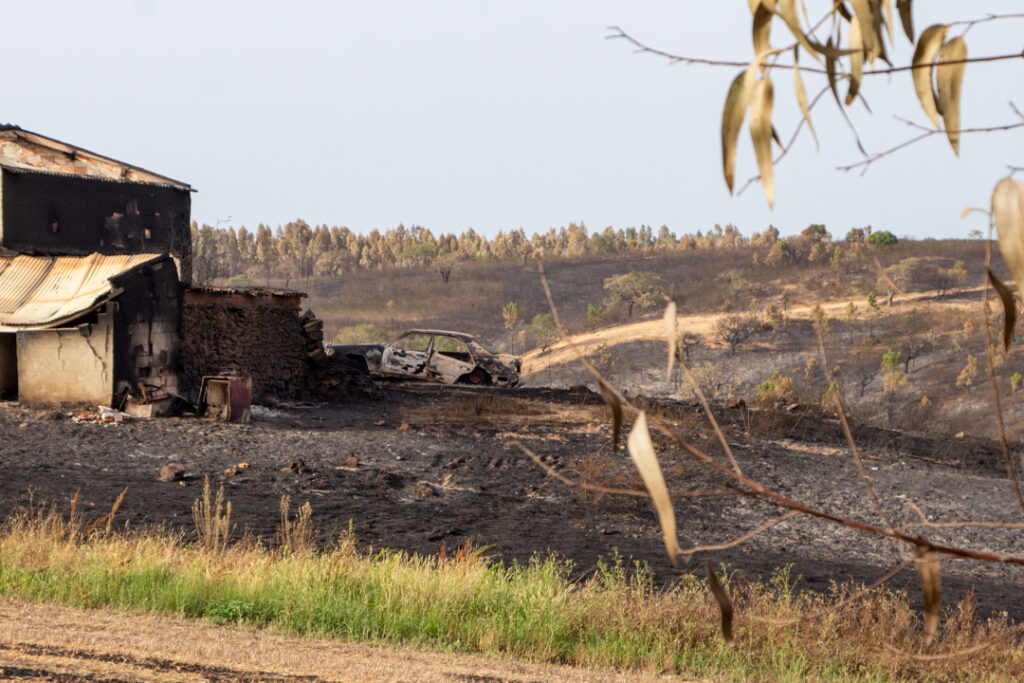The areas of Odemira and Castelo Branco, hit by fires this summer, will receive support of 40 million euros to recover their respective territories, through the creation of integrated landscape management areas.
According to Ana Abrunhosa, Minister of Territorial Cohesion, these integrated management areas will make it possible to intersperse forest areas, especially indigenous ones, with agricultural areas and will be able to bring income to the owners, from the perspective that they “provide a service to ecosystems”.
The support measures for these two territories were approved on Thursday by the Council of Ministers, which declared the fires that occurred at the beginning of August in Odemira (Beja), Aljezur and Monchique (both in the district of Faro) and in Castelo Branco and Proença-a-Nova (in the Castelo Branco district) as “exceptional situations”, determining measures to address the damage caused.
According to the minister, 40 million euros (ME) will be available for these two areas, a value above the approximately 25 ME of losses declared after the fires, because the objective is not only “to replace what burned and was damaged, but also introduce resilience measures”.
In both areas, the Government intends to create integrated landscape management areas, with interventions «in order to organize the territory in forestry terms, to intersperse forest culture» more appropriate to the region, more indigenous, «with agriculture», explained.
«In other words, for losses of around 25 ME, the resolution provides for support in the amount of 40 ME. They ask, so it's not just to cover the losses? Well, it's not. It is to actually support tourism, support companies, because in the case of Odemira, which has already suffered so much from the pandemic, we are talking about a tourist destination whose image we have to enhance, recover, so that tourists continue to come to this territory", he said.
The minister highlighted that this «is a medium and long-term project» both for Odemira, which is included in the Natura Network and «is very sensitive in terms of biodiversity», and for the Castelo Branco area, which was also «already identified as extremely sensitive».
The system will allow «to work with the owners of the land», in which minifundios and private property predominate, finding «a team that manages the forestry and planning of the territories, as well as the agricultural».
«The idea here is to have the territory with income, so that owners can and have the incentive to adhere to this new way of managing the territory. Even those whose territory serves as a combustion zone and, therefore, cannot produce either agriculture or forestry, will also have income,” he said.
According to the minister, this management will allow “the Government to pay for these territories”, as they “contribute to water quality and air quality” and provide a “service to ecosystems”:
«And today, with carbon bonds, this also allows the appreciation of these territories. (…) If there are territories where the carbon market makes sense, it is in territories where we have forests,” he said.
The carbon market aims to reduce the overall carbon footprint, allowing companies that are unable to reduce their emissions to buy “credits” from other sustainable organizations, generating income for them.
A “credit” (the currency used) corresponds to a ton of carbon that is no longer emitted into the atmosphere, in a market regulated and certified by the UN.
The fire that broke out on August 04th in the municipality of Castelo Branco, and which progressed to Proença-a-Nova, consumed 6.553 hectares, while the fire that started in Odemira, in Alentejo, on August 05th, and spread to Aljezur and Monchique, in the Algarve, affected 7.513 hectares.
These two fires were the largest recorded in Portugal this year and, in both cases, were fought by more than 1.000 operators.



















Comments